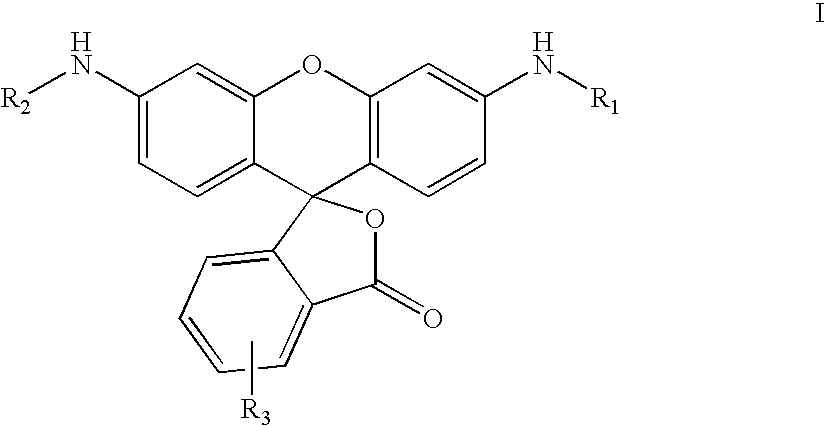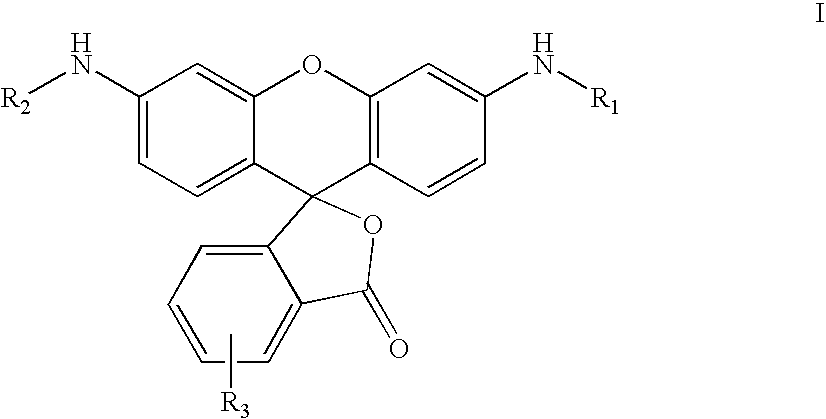Fluorogenic enzyme substrates and uses thereof
a technology of fluorogenic enzymes and substrates, applied in the field of fluorogenic enzyme substrates, can solve the problems of limited availability of large sample amounts and significant obstacles to screening clinical samples for multiple protease activities, and achieve the effect of better control of substrate/analyte concentration
- Summary
- Abstract
- Description
- Claims
- Application Information
AI Technical Summary
Benefits of technology
Problems solved by technology
Method used
Image
Examples
Embodiment Construction
A. DEFINITIONS
[0040] All technical and scientific terms used herein generally have the same meaning as commonly understood by one of ordinary skill in the art to which this invention belongs. The present definitions and abbreviations are generally offered to supplement the art-recognized meanings. Generally, the nomenclature used herein and the laboratory procedures organic chemistry, polypeptide synthesis and enzyme chemistry described below are those well known and commonly employed in the art. Generally, enzymatic reactions and purification steps are performed according to the manufacturer's specifications. Standard techniques, or modifications thereof, are used for chemical syntheses and chemical analyses.
[0041] The term “monomer(s)” as used relative to organic moiety synthesis or PNA identifier tag synthesis refers to discreet building blocks employed to prepare the organic moiety or the PNA identifier tag of the fluorogenic enzyme substrates of the present invention. Thus, in...
PUM
| Property | Measurement | Unit |
|---|---|---|
| temperature | aaaaa | aaaaa |
| reaction time | aaaaa | aaaaa |
| reaction time | aaaaa | aaaaa |
Abstract
Description
Claims
Application Information
 Login to View More
Login to View More - R&D
- Intellectual Property
- Life Sciences
- Materials
- Tech Scout
- Unparalleled Data Quality
- Higher Quality Content
- 60% Fewer Hallucinations
Browse by: Latest US Patents, China's latest patents, Technical Efficacy Thesaurus, Application Domain, Technology Topic, Popular Technical Reports.
© 2025 PatSnap. All rights reserved.Legal|Privacy policy|Modern Slavery Act Transparency Statement|Sitemap|About US| Contact US: help@patsnap.com



